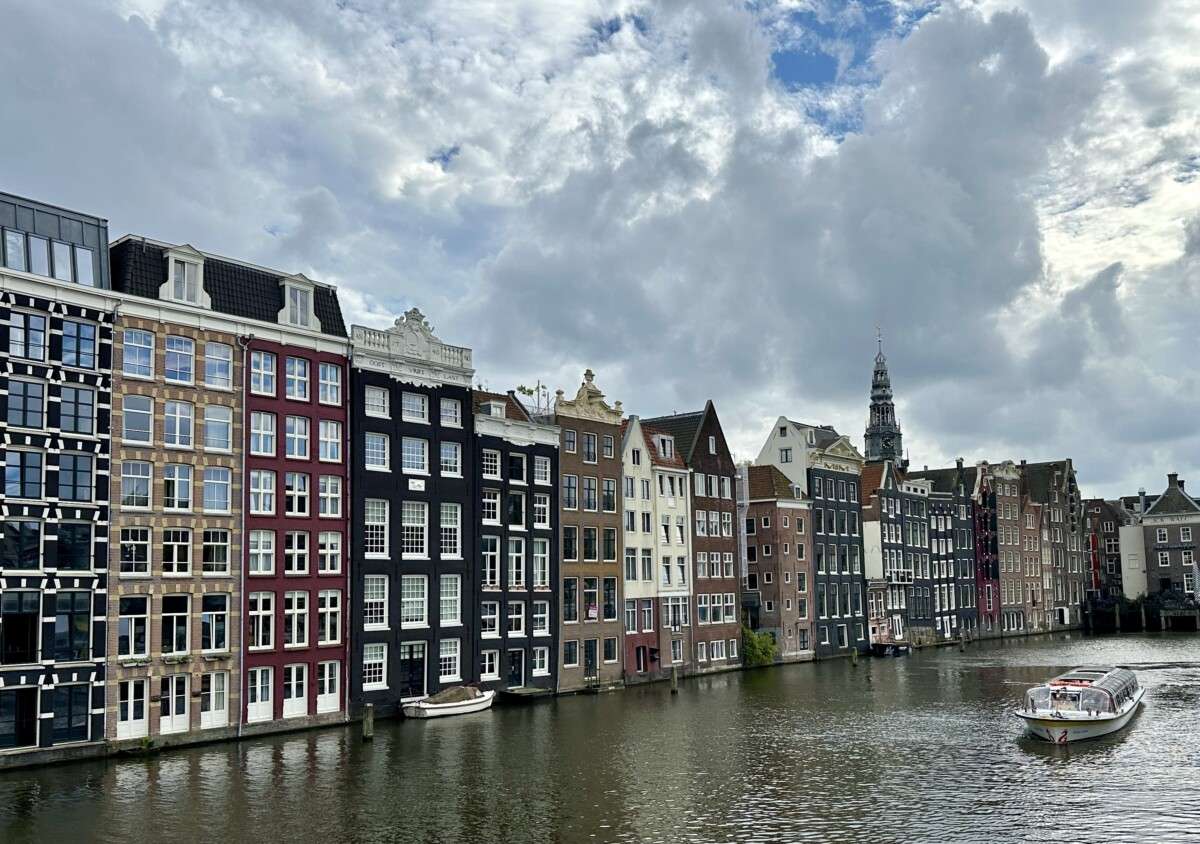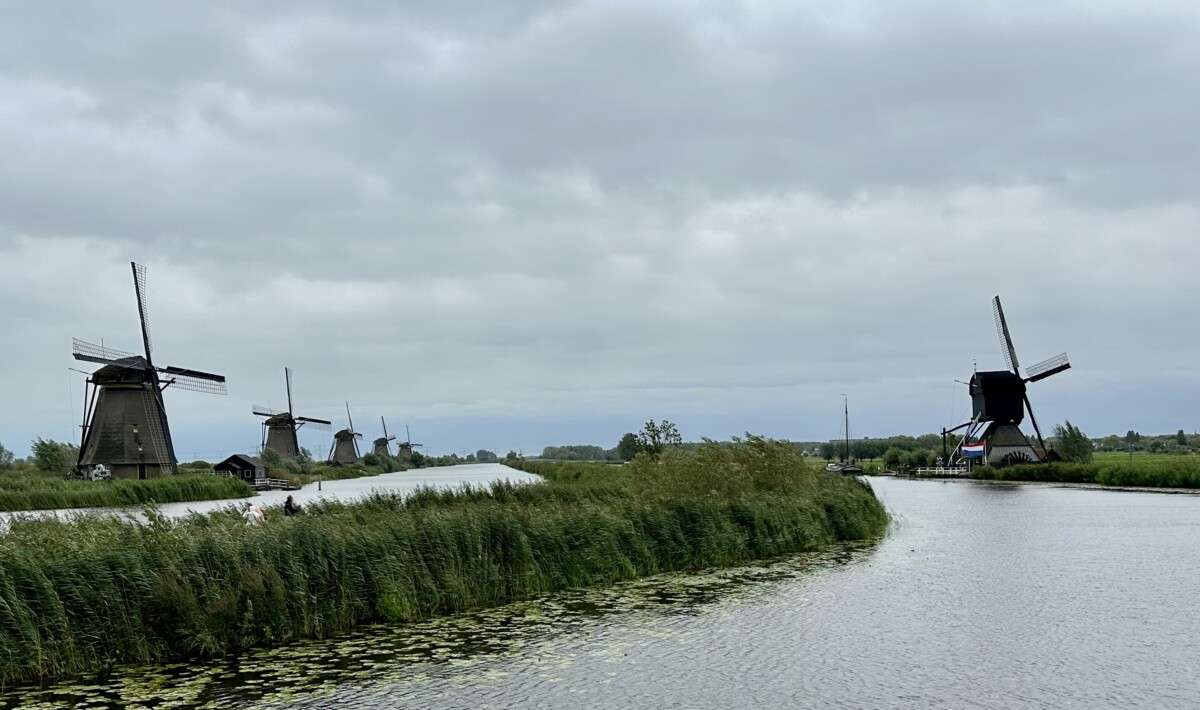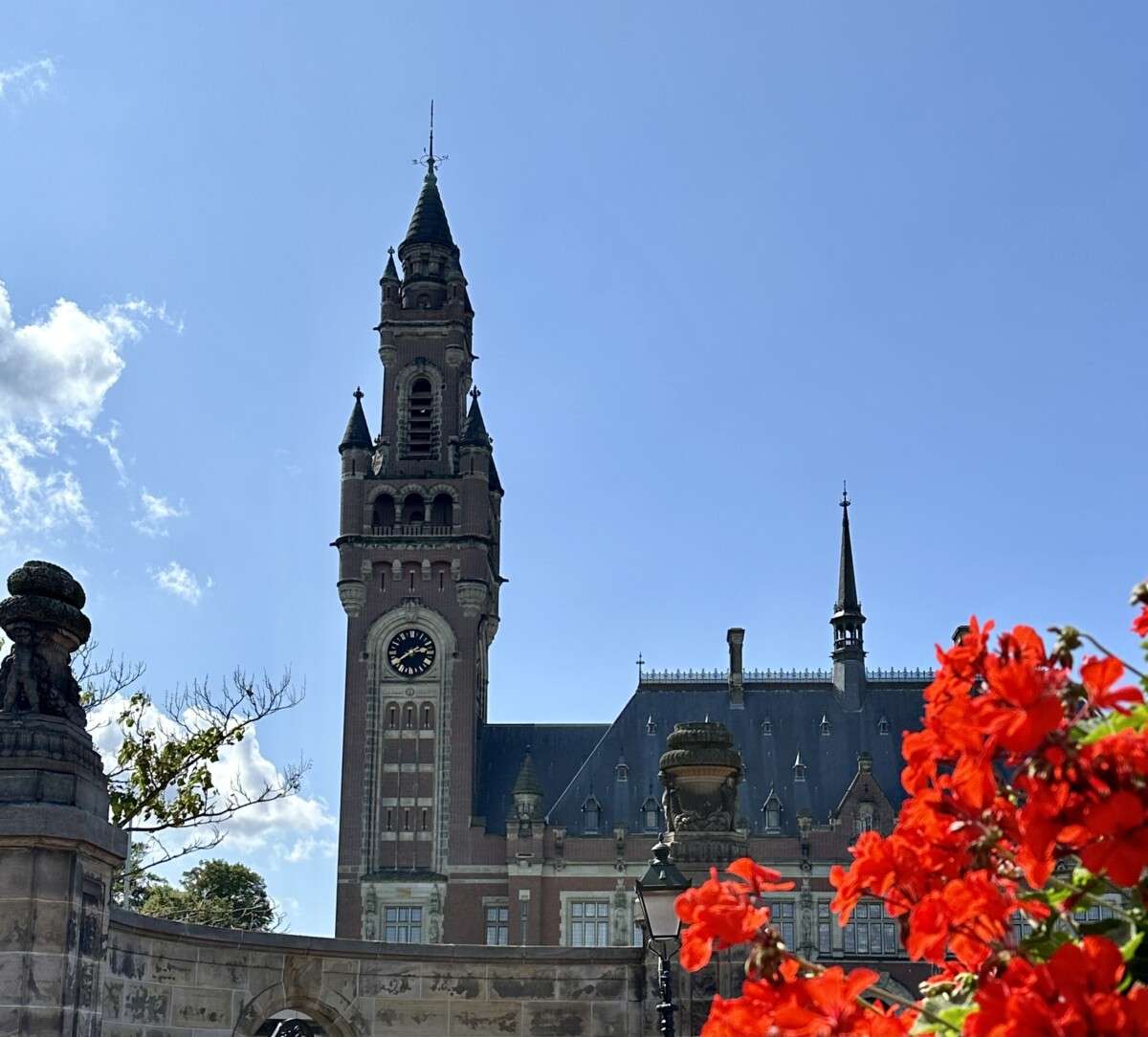After the capital city of Amsterdam, Rotterdam is the second largest city in the Netherlands. We found it to be a great city with so many things to see and do here. And it was a short day trip by train or waterbus to other wonderful places like Delft, Kinderdijk and The Hague.
We stayed downtown at the Marriott, across from the main train station, which turned out to be a great central location close to everything we did.

During one of the days in town we booked a walking tour. We met up with Abdallah, our tour guide, at Centraal Station. He was great! Walking around with him was like having an old friend show you his town.
One of the first places he took us to was the underground bike storage in Centraal Station. Did you know there are more bikes than people in the Netherlands? (18 million people, 24 million bikes!) We’d heard this but seeing all these bikes made it more real. Abdallah told us that bike storage is free in train stations and on city streets. He said he has a bike in Rotterdam, and keeps another bike at the train station in a nearby city where his parents live. Apparently, this is quite common.

Rotterdam Centraal was originally built in 1957. In 2004 it was updated to this retro futuristic style and was very clean and modern inside. This train staion, “…includes two supermarkets, …a range of take-away food options, and two branches of Starbucks…The south side features an underground bicycle parking for over 5,000 bicycles.” – Wikipedia

Walking around town we saw quite a bit of art. Some quirky and some just made you wonder what the artist was thinking when they created it.



A short distance from the train station we passed a large fountain in the middle of a roundabout. This is considered the heart of Rotterdam. Abdallah told us all roads lead to here.

This orange structure (below) represents one of the original city gates. Napoleon entered the city through this gate. Originally built in 1545, it used to be located where the fountain is today.

In 1930 the gate was relocated to its current spot to make way for new buildings. Unfortunately, the city, and the city gate, were bombed 10 years later during World War II.

“The gate was put back in 1993 as a skeleton made out of orange metal beams to symbolize how Rotterdam is constantly under construction.” – Atlas Obscura

The most important statue salvaged after the bombings was this lion, who served as the gatekeeper to the city. He was lost for years and thought destroyed, until someone found him again in 1976.

After the bombings of World War II, there was an effort to quickly rebuild homes for the people of Rotterdam. Many buildings, like the brown building seen below, were part of what Abdallah called ‘gray modernism’ – very boring and utilitarian.

The City owns the building and several balconys displayed signs saying “Sloop ons niet” which means, “Don’t destroy us” in Dutch. Abdallah told us that the City wants to move the tenants out and build a new, more modern building.

One of the few buildings to survive the WWII bombings is City Hall. All marriages in the Netherlands have to be registered and take place at City Hall (though many couples also have a ceremony elsewhere afterwards). Abdallah told us that on Mondays you can marry for free, other days it is 400-600 euros. Needless to say, the waitlist for Mondays is incredibly long.

City Hall was built in 1917 and survived WWII bombings, though it still has many visible holes in the walls. The inside has been renovated but the outside facade has been kept as is.

Next door to City Hall is another of the few buildings that survived the 1940 bombings. It was built at the same time as City Hall

And, like City Hall, Abdallah told us the City decided to keep a visible reminder of the damage from the bombings.

“In October 2021, the partial demolition of the old post office (the east facade) began, in order to build a residential tower there.” – Wikipedia
It was very strange, and a bit shocking, to see the demolition – even partial demolition – of a historical building in Europe. Abdallah said that many locals are not happy with this construction project.


St. Lawrence church (Laurenskerk) was built between 1445-1525. It is the only building from the middle ages that survived the 1940 bombings. It is quite remarkable that it survived when you see how much destruction there was all around it.







When we came out of the church Abdallah surprised us with a stroopwaffle – a Dutch treat found throughout the Netherlands. It is a waffle with syrup baked into the middle. It is usually served warm from street venders. OMG! It was delicious!!!!

After our stroopwaffles Abdallah took us to Markethall for lunch. This was an interesting building. The building was created as a contrast to the boring “gray modernism” that tool over the city after the war. It has food stalls and shops on the bottom and apartments are on top. And both ends are walls of windows so you can see all the way through it.

The apartments had windows looking out over the food stalls inside the Markethall. It was really cool to see though we can’t imagine living here. We could see right into the apartments – not much privacy.


Two interesting buildings can be seen through one end. The library, to the left, has yellow pipes flowing around it. The other building is called “the crayon” or “the pencil” by locals. We thought it looks like a gnome.

Another unique set of homes are the Cube Houses. Each cube is a single unit and three stories tall.

The architect said that each of the 38 homes represents a tree. Together they form a forest in the middle of the city. The idea was to make a little city center with shops in the middle.













We ended our tour at the old harbor. It is one of the places that didn’t get bombed. The red bridge is named after the 1st king, Willem of Orange.


As we were heading back to our hotel we noticed people in a canal on surfboards. Abdallah had told us that a company started offering surf lessons in one of the canals. He said that surfers in Rotterdam usually go to the Hague to learn to surf on the North Sea but many were excited that one of the canals had been set up with a wave machine in it.
We loved our time in Rotterdam. It was a great city with so much to see and very friendly people.





PS Those are large stroopwaffles !!
Jerilyn and Joel. A great tour of Rotterdam… Very unique city which was not what we would have expected. The Markethall was unbelievable and the cube houses so very different. Fun to see but I don’t think we could live in one. Amazing architecture. Thanks for showing us the city.
Such interesting architecture!
I loved reading about your walking tour of Rotterdam. What a unique city! Thanks for your wonderful and detailed stories and photos!
Dennis